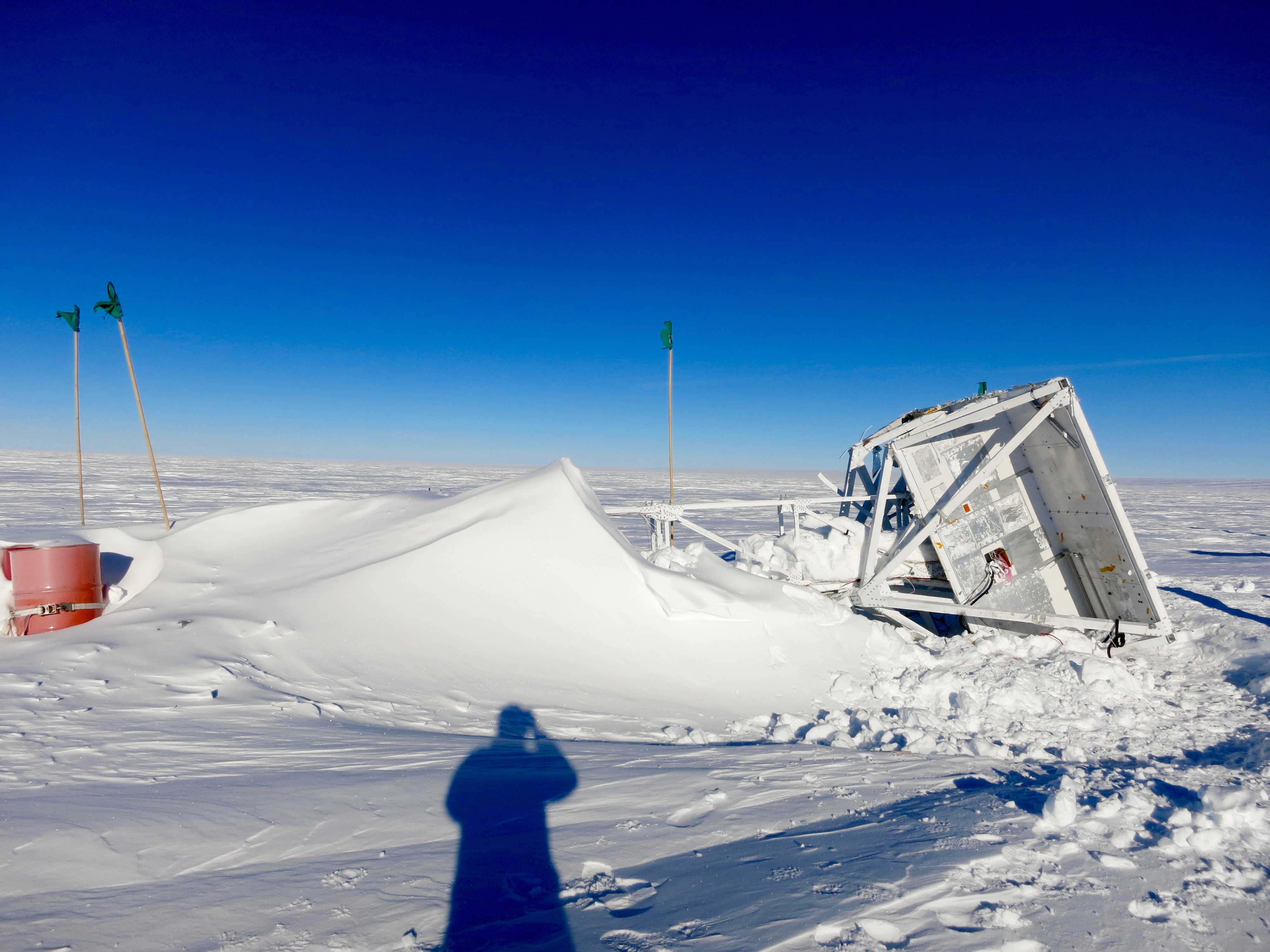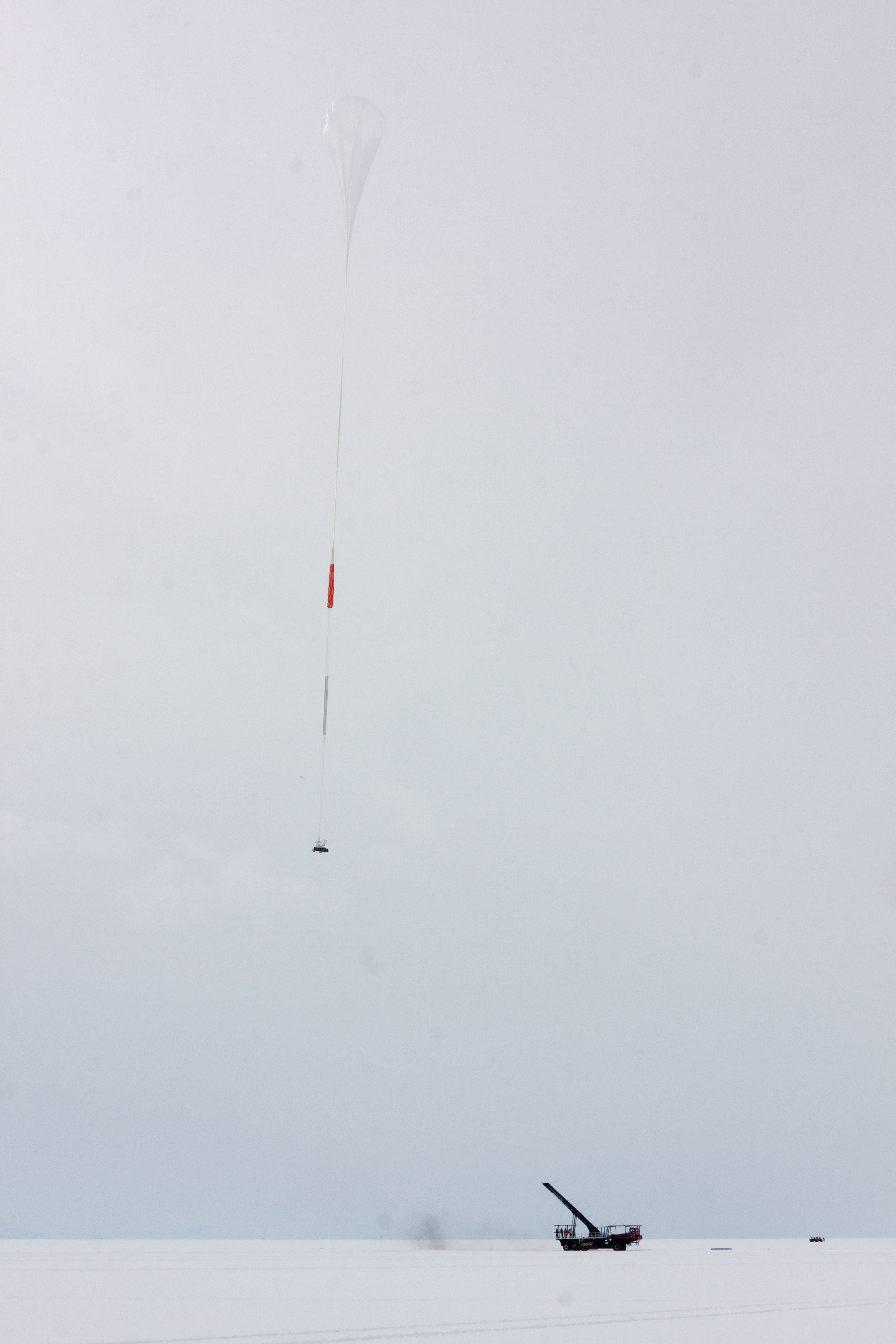Lost and Found: Antarctic Balloon Telescope in Good Shape After a Year on the Ice

Scientists successfully recovered an Antarctic high-altitude balloon telescope after it sat in frigid conditions for almost a year.
The balloon telescope had spent 12 days flying 24 miles (39 kilometers) above the continent before scientists sent a preplanned command to cut the payload from the core. After the telescope parachuted onto the ice on Jan. 30, 2016, scientists were forced to leave it there due to incoming winter weather.
While the scientists did recover the data from the mission, called GRIPS (Gamma-Ray Imager/Polarimeter for Solar flares), most of the instruments sat out in the cold until this January, when it was warm and safe enough to pick them up. Officials flew out three times from an Antarctic research station to dig out the telescope components and bring them back for shipment to the United States. These procedures are common in Antarctic science, NASA officials noted. [See the NASA Telescope Recovered in Antarctica 1 Year Later (Video)]
"Despite sitting on the ice for a year, no snow had made it into the electronics," Hazel Bain, a University of California, Berkeley solar physicist on the GRIPS team, said in a statement. "The cryostat instrument, which houses the GRIPS detectors, seemed in great condition, and we're hoping to use some of the instruments again."
After recovery, the instruments were flown back to the National Science Foundation's Amundsen-Scott South Pole Station, about 500 miles away. They were then dried out and packed for shipping to the National Science Foundation's McMurdo Station, where the mission began last year.
"The U.S. Antarctic Program's Ocean Giant, the annual resupply vessel to McMurdo Station, will return the instruments to the U.S., where they will eventually undergo testing and evaluation for potential future flights," NASA officials said in the statement.

The mission is a balloon-flown telescope that studies high-energy particles created by solar flares. Flares are often accompanied by coronal mass ejections that send charged particles toward Earth, sometimes damaging satellites or power lines. So, scientists research the flares to learn more about how they are generated, and their potential effects on Earth.
Get the Space.com Newsletter
Breaking space news, the latest updates on rocket launches, skywatching events and more!
GRIPS specifically analyzes X-ray and gamma-ray emissions, which are both wavelengths of light that are largely blocked by Earth's atmosphere. The high-altitude mission allows scientists to study these wavelengths above most of the atmosphere, for a lower cost than a typical space mission.
Further, the instruments aboard GRIPS examine coronal mass ejections with three times more detail than instruments available in space, NASA said. Studying X-rays and gamma rays shows the composition, abundance and dynamics of solar flare material, the agency added.
Follow Elizabeth Howell @howellspace, or Space.com @Spacedotcom. We're also on Facebook and Google+. Original article on Space.com.
Join our Space Forums to keep talking space on the latest missions, night sky and more! And if you have a news tip, correction or comment, let us know at: community@space.com.

Elizabeth Howell (she/her), Ph.D., was a staff writer in the spaceflight channel between 2022 and 2024 specializing in Canadian space news. She was contributing writer for Space.com for 10 years from 2012 to 2024. Elizabeth's reporting includes multiple exclusives with the White House, leading world coverage about a lost-and-found space tomato on the International Space Station, witnessing five human spaceflight launches on two continents, flying parabolic, working inside a spacesuit, and participating in a simulated Mars mission. Her latest book, "Why Am I Taller?" (ECW Press, 2022) is co-written with astronaut Dave Williams.









